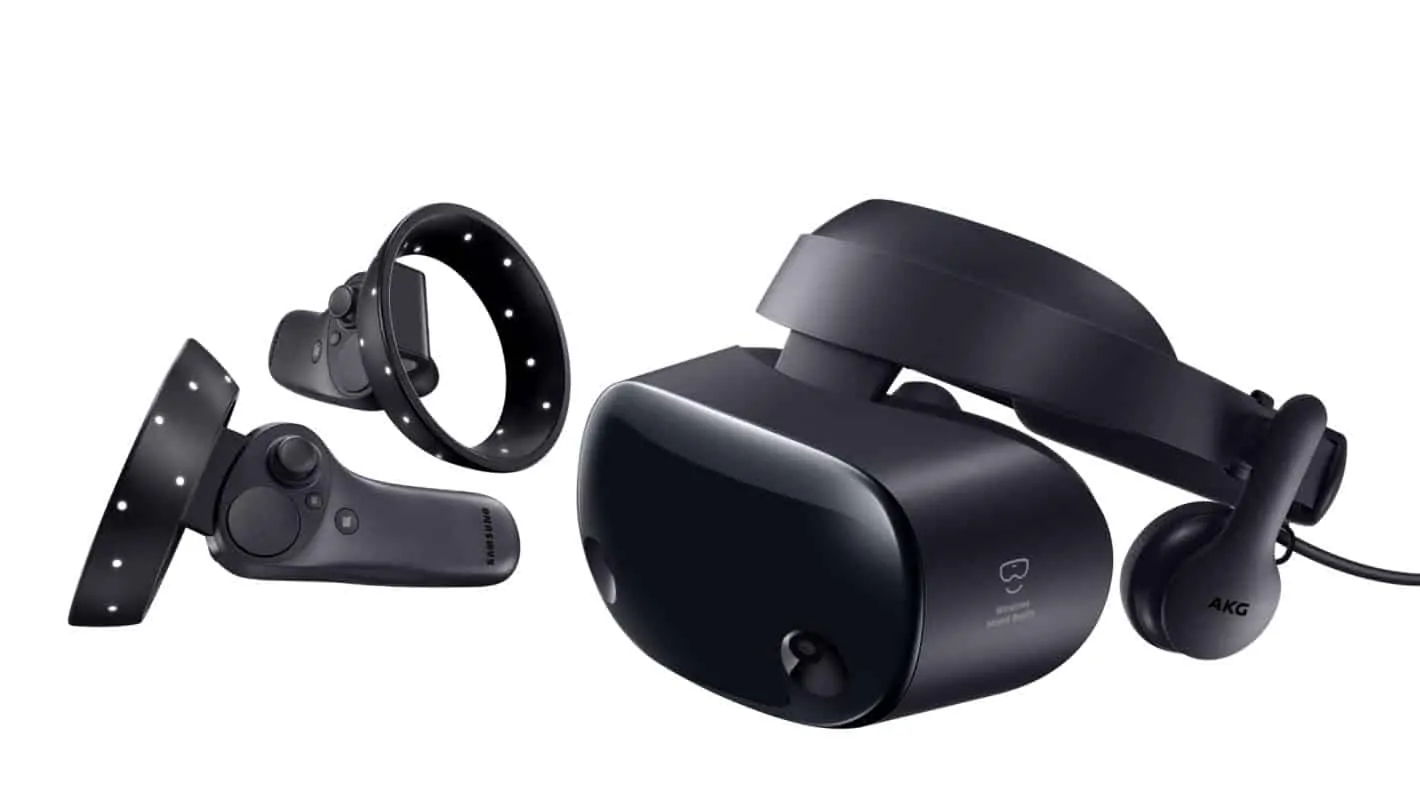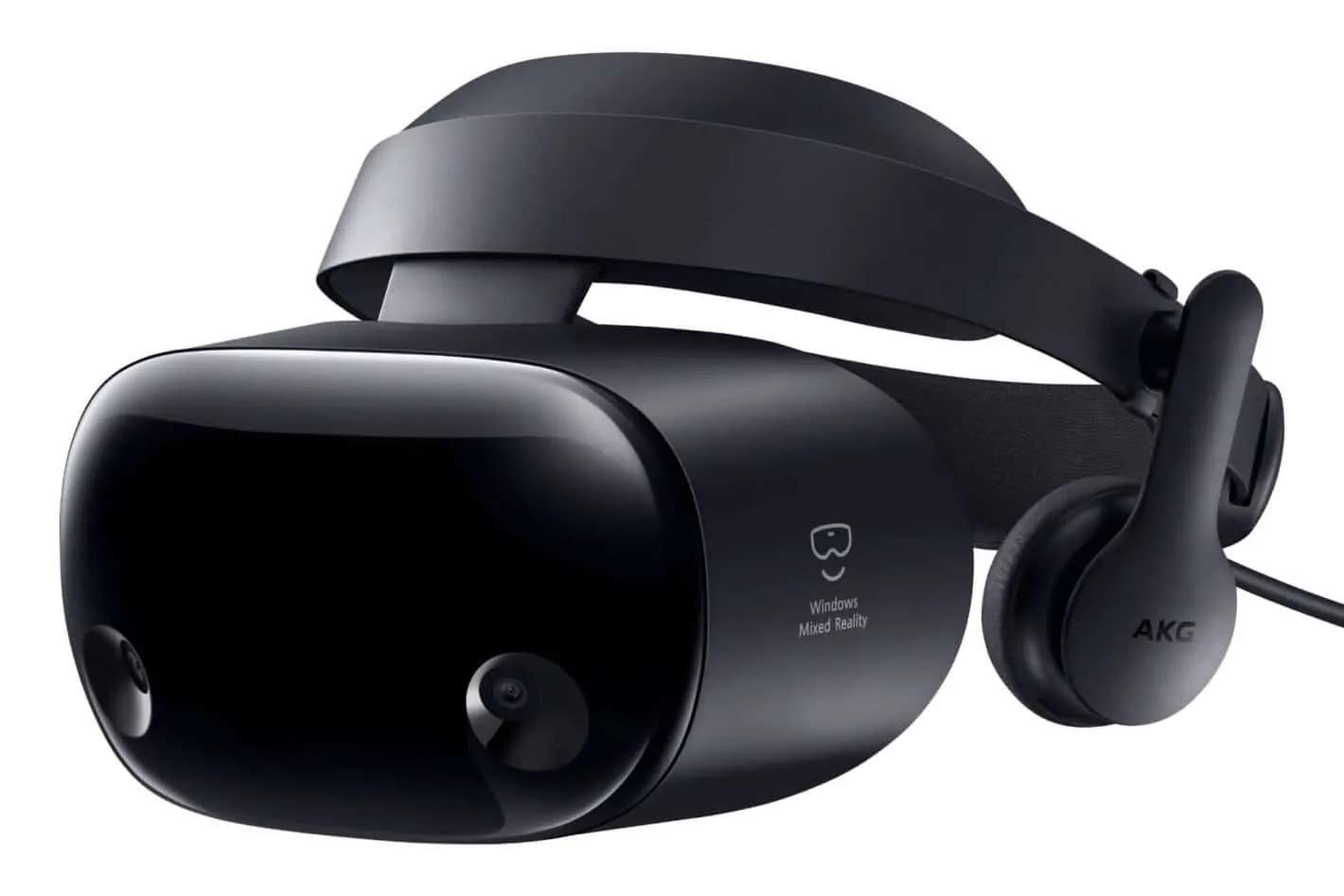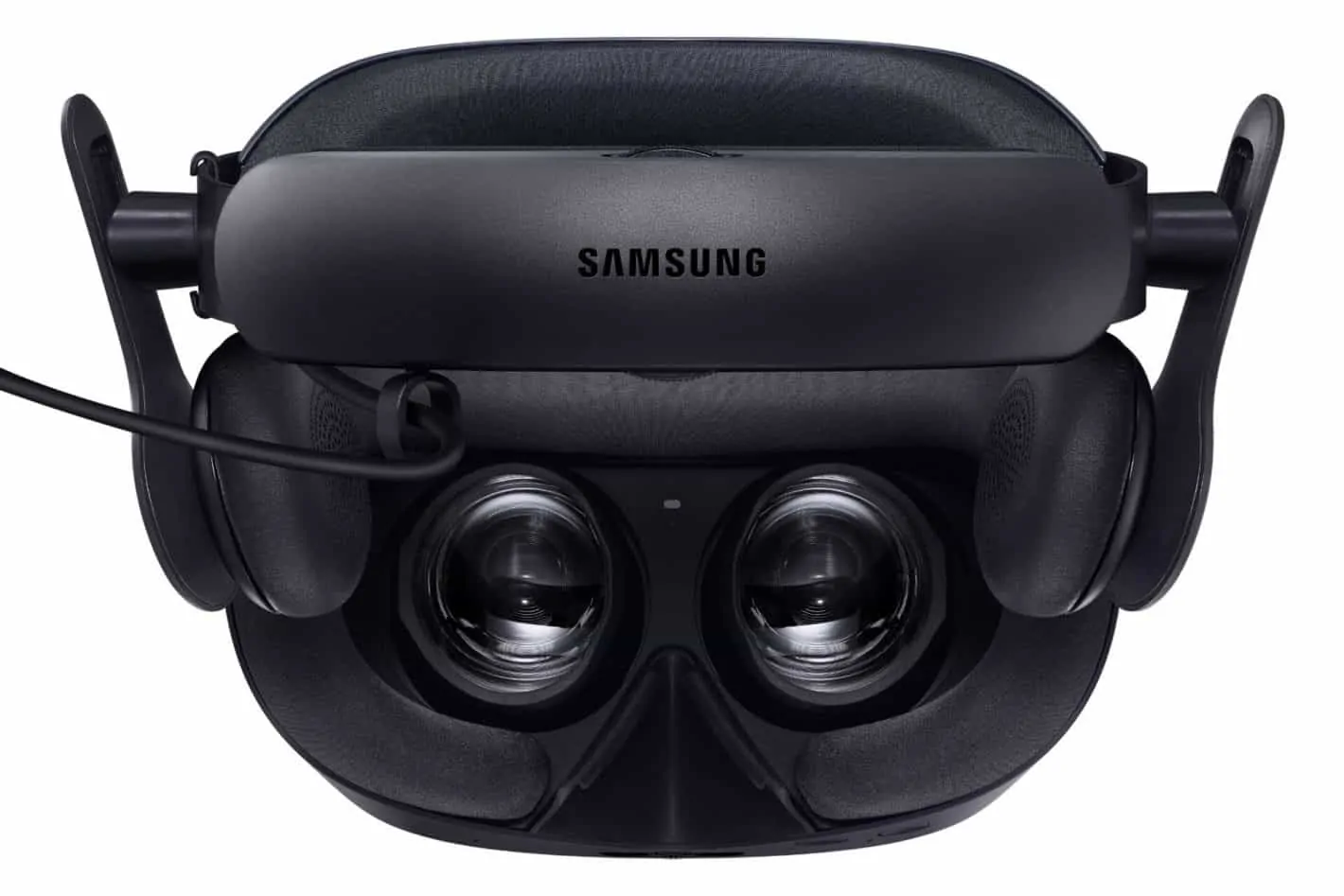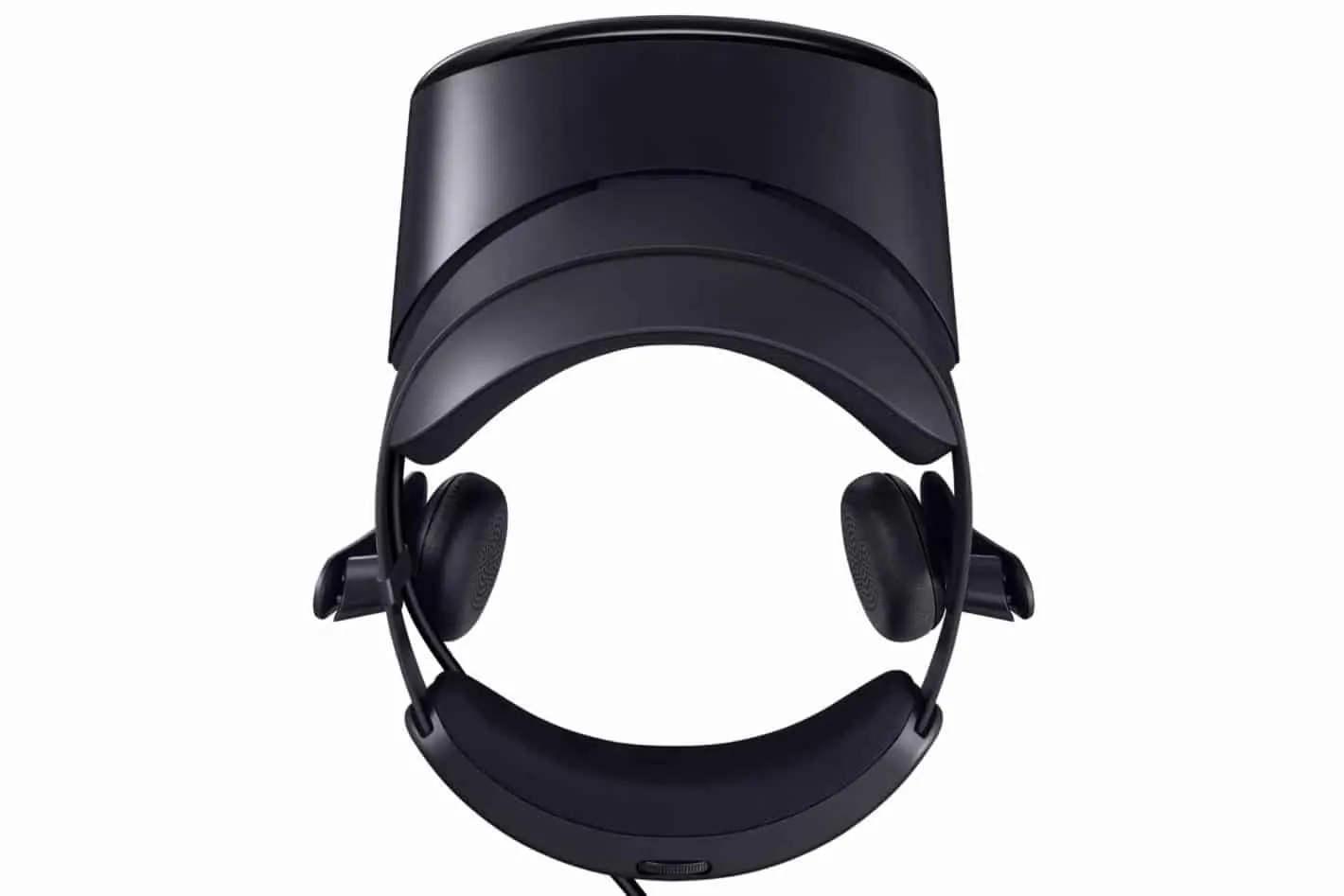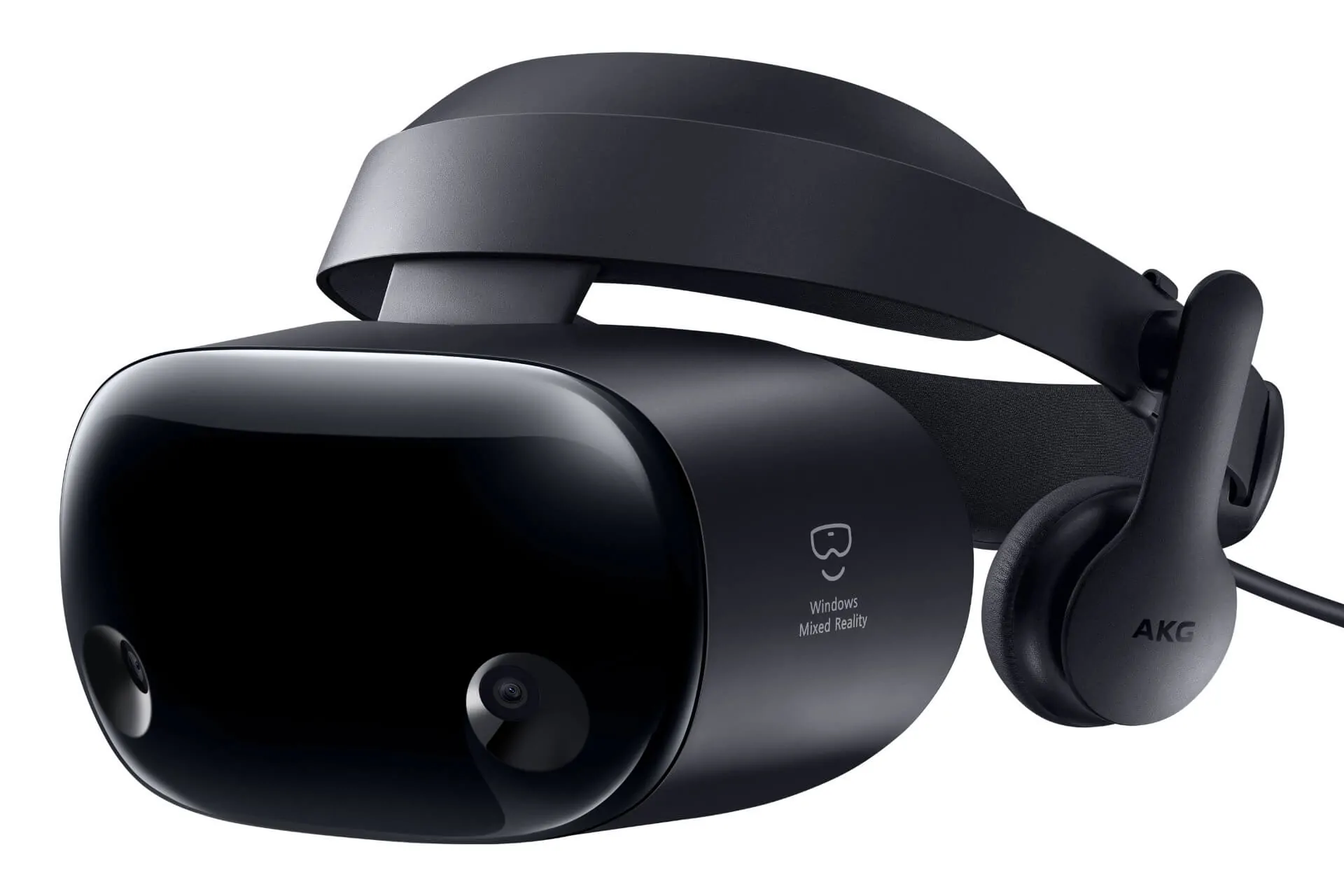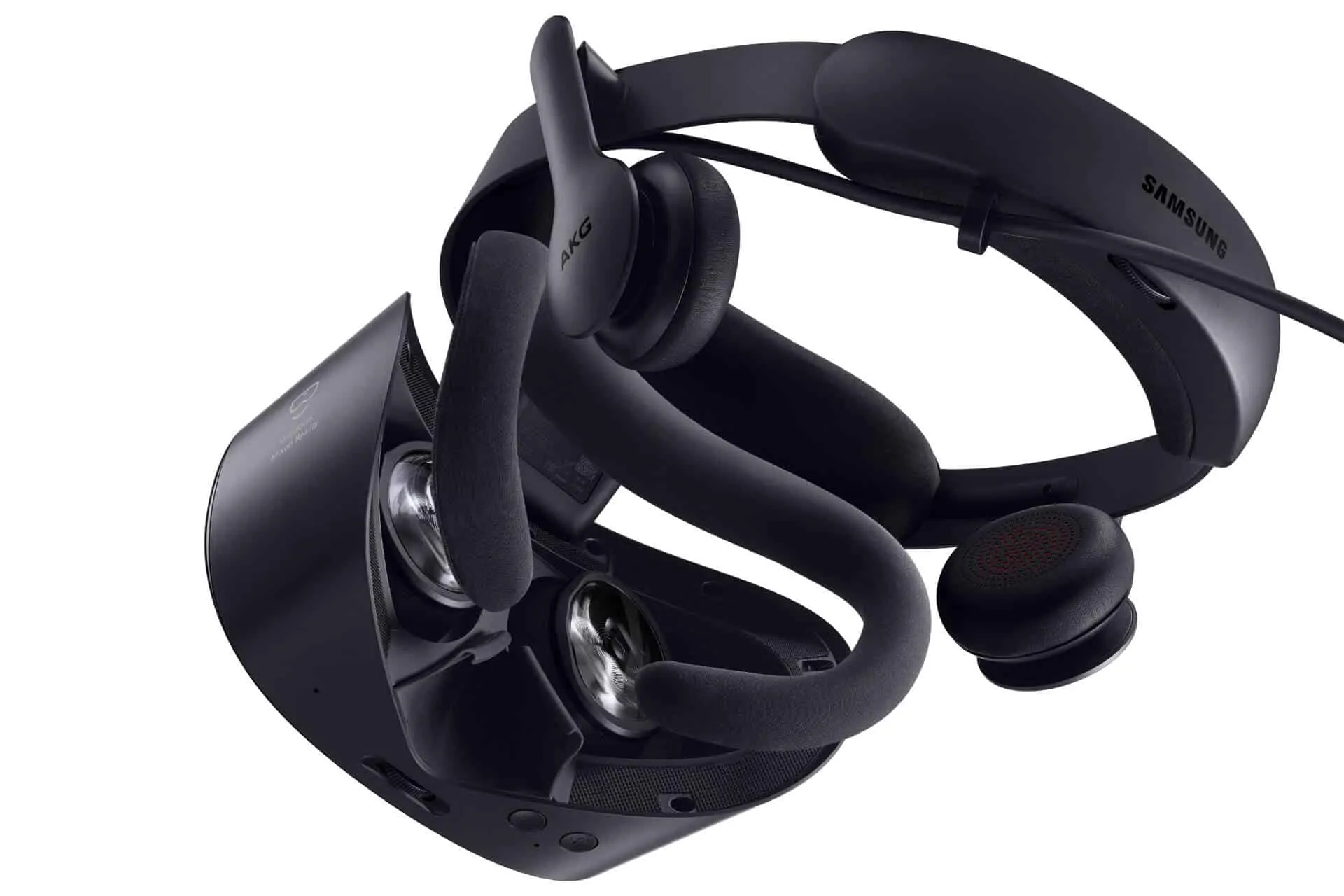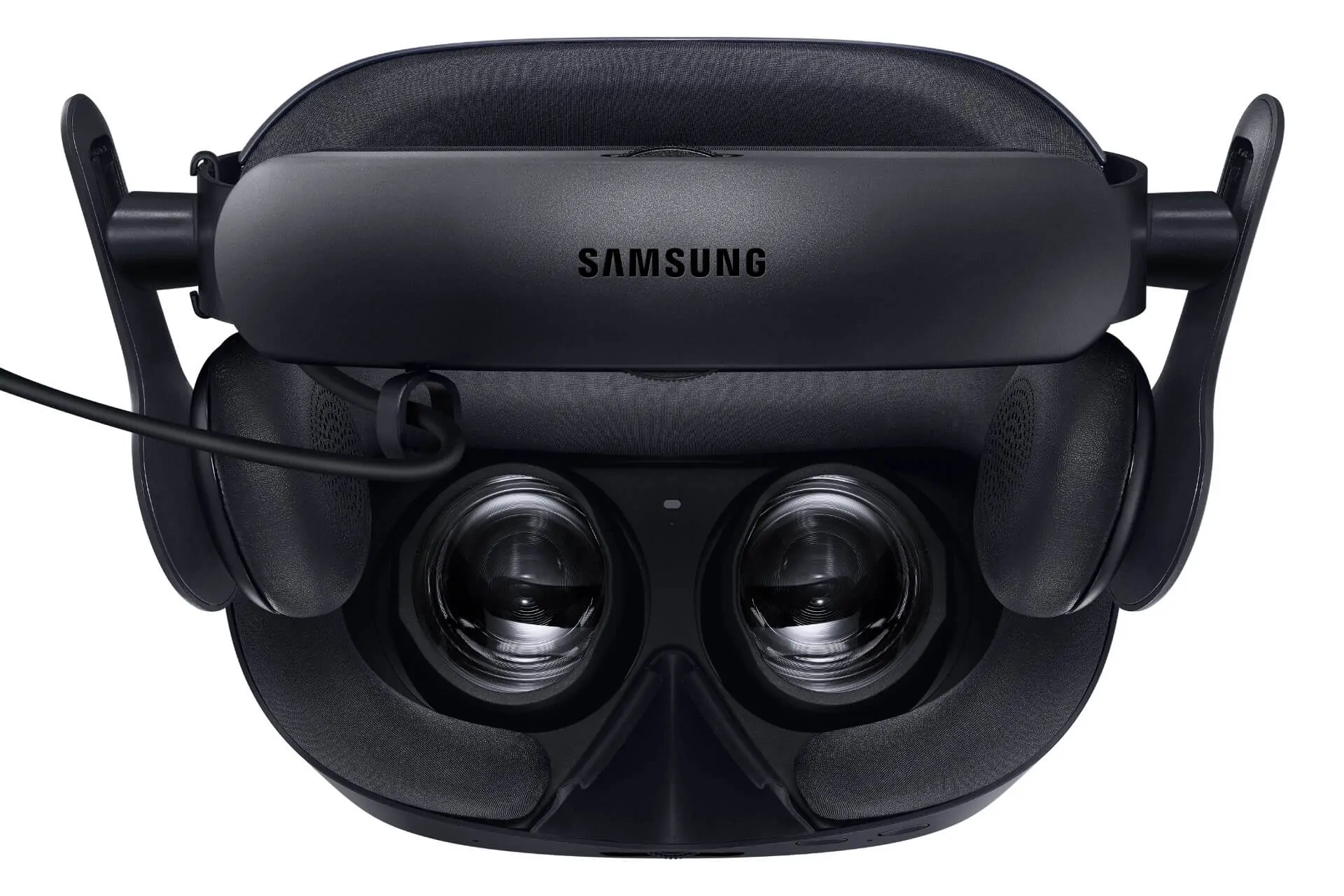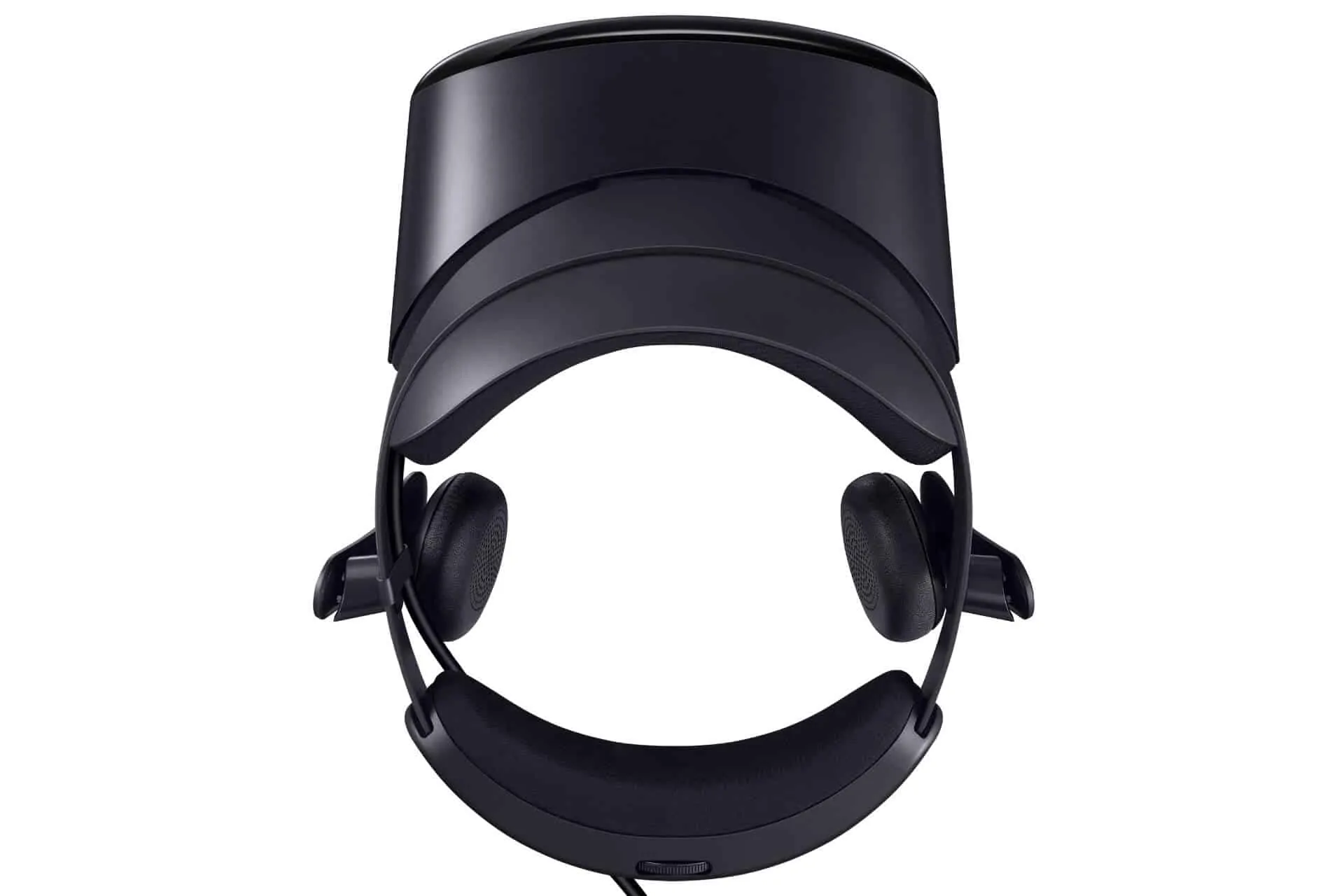Samsung’s next-generation Windows mixed reality (MR) headset, the HMD Odyssey+, is now available to purchase in the US for $499. While most aspects of the new device are almost identical to its predecessor, the Korean tech giant has revealed several significant improvements with the most recent iteration. For starters, the headset has a “perceived” pixel density of around 1,233 PPI, thanks to dual 3.5-inch AMOLED displays with a resolution of 1,440 x 1,600 per eye and a new technology Samsung calls its Anti-Screen Door Effect Display (Anti-SDE). The company hasn’t detailed exactly what the latter of those enhancements is but it is said to help eliminate the perception of lines between pixels commonly called the ‘screen door effect’. Weight has been reduced to just 1.3 lbs and the overall design features a wider 146mm eye box for a more natural and comfortable fit and every adjustable aspect of the device has been made easier to interact with. Moreover, the build of that eye box is now topped with breathable material meant to stop the displays from fogging up and that’s detachable to help users clean the device more easily.
Beyond that, the company has added support for the Steam gaming platform’s VR services, opening up more uses for the headset beyond Microsoft’s MR applications. The HMD Odyssey+ controller can now be used as a kind of “flashlight.” Unlike a traditional flashlight, however, that won’t be used to light up dark spaces. Instead, users can activate the functionality to view the world around them without having to remove the headset itself. No pricing or exact availability timeframe has been provided for regions outside of the US but Samsung says that Korea, China, Hong Kong, and Brazil will see the HMD Odyssey+ next. For now, the headset can be bought from either Samsung’s website directly or through the Microsoft Store online.
Background: The new Samsung HMD Odyssey+ was actually spotted a couple of months back in an FCC listing that gave away quite a few details about the device before this launch. As noted at the time, there really aren’t a lot of differences between the previous HMD Odyssey headset and the latest version. Looking past the inclusion of a vastly superior display resolution and Anti-SDE, the refresh rate of the panels is still set at between 60Hz and 90Hz, with a field of view set at 110-degrees and tracking over an area of 170-degrees. A dual-array microphone is still included too, as are an HDMI 2.0 port, USB 3.0, and Bluetooth for establishing connections. Meanwhile, the integrated AKG-branded headphones are still built around 360-degree spatial audio and the company’s renowned audio quality. Built-in volume controls are part of the package as well.
The headset is still centered around the concept of precise control via 6 Degrees Of Freedom (6DOF). That’s enabled by various sensors that allow for with “Inside-Out” position tracking, letting a user’s in-VR experience actively track with their real-world head motion. In combination with the newly updated displays, the result should be a serious reduction in dizziness and motion sickness. The two included pre-paired controllers mimic that 6DOF accuracy in motion tracking, keeping tabs on virtual distance, angles, and other aspects of the user’s movement. So both sight and hand motions will better reflect the user’s perceived reality.
Impact: Taking all of that into consideration, the apparently small changes and software features delivered with Samsung’s HMD Odyssey+ aren’t necessarily going to have small implications. Instead, the primary focus here is on both comfort and eliminating the various negative physical responses associated with VR and AR applications from their first appearance on the market. By removing or reducing the screen door effect, Samsung’s latest headgear should be much more immersive and create fewer problems with nausea or dizziness. What’s more, the weight, audio quality, and 6DOF act as augments to that, letting users interact with their virtual environment more naturally. In effect, Samsung has kept what worked with the original HMD Odyssey and improved on the worst drawbacks of the technology.
Samsung HMD Odyssey+ - Windows Mixed Reality Headset
